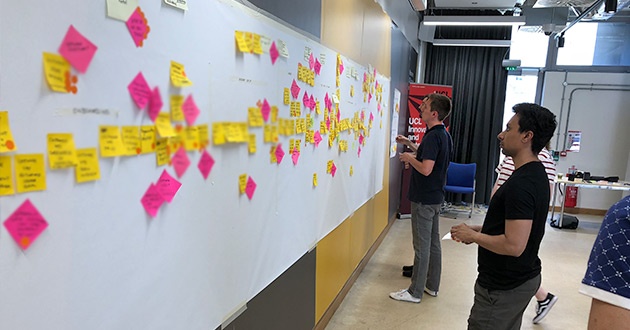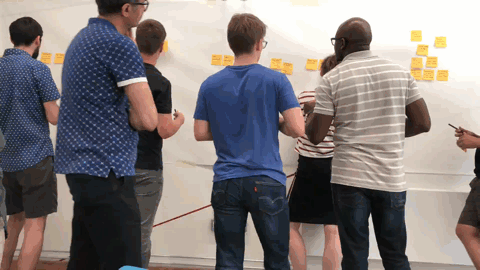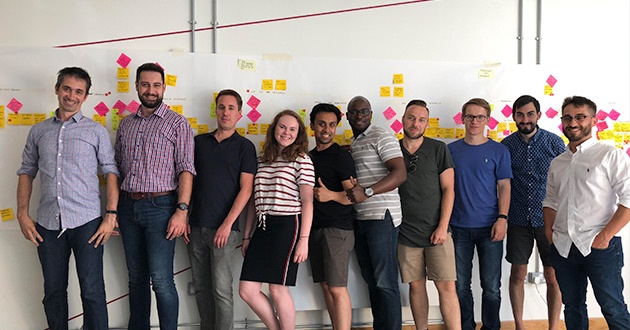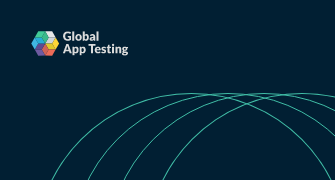What Is Event Storming? How Is It Key to Agile Strategy Success?
The room filled with excitement as the last sticky note was placed on the timeline. I’d never seen such an energy between our product and engineering teams; mostly because they were remote to one another. However, seeing them all in a room, building out this incredible event storm for our products couldn’t help but get anyone amped up.
Bringing together teams who are cross-functional and global is no easy task. Having these teams collaborate and make extensive workflow improvements in the span of 8 hours is nothing short of amazing!
But, that’s exactly what happened when the Global App Testing Product team, lead by Tom Layfield, and Engineering team, lead by Wojciech Olearczyk, came together here in London for our first ever Event Storming session.
Before Wojciech introduced the concept of event storming I had never heard or seen it in action before. I was intrigued and decided that after the session was over, I would interview the two of them and write up my findings.
I wanted to learn how the process applied to the two teams and also the wider implications that it might have across the company. What follows is a Q&A session that covers the most important things I learned.
What is event storming?
Wojciech Olearczyk (WO): Event Storming is an agile and lean way of getting teams to collaborate on technical domain projects, combine thoughts and learn to work with a shared understanding. One of the principle of Lean is to visualise processes that can give you the ability to define your biggest hotspot. During this session we visualised how we deliver value for our customers over two of our product lines - Exploratory Testing and Test Case. A key element is that during the workshop you need to have different roles within the room: Product, Business, Engineers, so they can align their knowledge and perspectives. It was important for me getting the different perspectives between teams and people and how everyone interprets different parts of the product.
Tom Layfield (TL): Event storming is a way of digging into a process, usually a long, complicated process. For example, we looked at two of our testing products and dug into the different elements that make up that process. Once that was outlined, we were left with 200 or so sticky notes that were on the wall. I think there were seven or eight of us from different parts of the business to essentially refine the timeline that made sense for everyone.

What made you decide on event storming? Was there a moment that was like, "We should do this"?
WO: I wanted to quickly determine the current status of our major products and event storming helps display that in the fastest way possible and explore potential areas for improvements. Within a few intense hours you can get full process models completed. Also I wanted to get cross-functional knowledge between the engineering team and product team for shared understanding.
By using people who are familiar with different parts of the product you get increased learnings and hotspots that you wouldn’t get unless everyone was working on it together. It was also to align all the knowledge and create the big picture so to speak. You get to see “end to end” flow which is something you can’t normally do.
Product and engineering working together in face-to-face workshops have been a key success for me in past roles. I believe that engineering is not only about development features, but also having the same understanding about the problem we are trying to solve.
TL: If I was to summarise why I think it is beneficial, then I would say it's good for shared understanding of process. When you have very complex processes such as ours, like with our products that involve lots of different people using many different tools and multiple different tracks of customers requesting things it can make for complicated workflows that not everyone fully understands.
Once you add our internal operations doing things based off those requests, and then filtering out to testers and actually completing tests and testers getting payment and checking how much they've been paid, it makes for an even greater set of complex workflows.
It's very difficult for everyone to understand the nuances of all of that process. So, in terms of shared understanding, it's pretty invaluable because it's one of the best methods I've used to give that shared understanding to a wider group of people.
By adding in crowdsourcing of ideas, everyone feels like they are able to contribute. You get some fantastic ideas of different things that you could do to solve some of the largest problems. It winds up being a good method of prioritisation of problems and solutions.

What surprised you about the event storming process?
WO: One of the big surprises for me was the agreement on vocabulary. When you have different teams located all over the world it can be hard to have a common language to speak. Add in the complexity of technical products and it can be easy for confusion to creep in. That’s where a shared language was really key and event storming helped us with that. Another element was that we have found out gaps in our knowledge because one of domain expert cannot participate.
TL: The most surprising thing was how obvious the problems became just by listening to all the different opinions people have on a subject. There were many different perceptions of how things work. And some of them were just from that person's viewpoint, but with other things it was really easy to identify how different people looked at things in a certain way. I think it was fantastic, exposing everyone's viewpoint whether it be right or wrong.

Were there any immediate wins that you could implement right away?
WO: One of the event storming session was about our agile process. We did run a post-event storming retrospective and that allowed us to dive right into optimising what we had learned from the process. We’ve already implemented some findings on how we run meetings, how we work on bottlenecks and our own QA as well. Seeing the big flow and big picture allowed us to see how the variations and work might affect this or that. The business process and domain-specific ideas came to light as well that we took back with us and rolled into our timelines.
TL: I think the immediate win was everyone understanding the process. Especially for example, one of our products, the exploratory test product, one of our product managers has this knowledge that is just so centralised on them. They understand 80 percent of the process, and the majority of people don't. The process of everyone understanding what actually happens, and where the problems exist is a major win.
Obviously when people don't understand what the current situation is and the potential problems, then they can't come up with good solutions.
Was there anything hard about the process?
WO: There isn’t really anything hard about the process itself. The session itself was very well organised and super easy to understand all the phases. You need to prepare supplies and items so that the session just flows without interruption. You definitely need to have a great facilitator involved they will also ensure that the whole thing runs smoothly as well. A great facilitator will really understand how to draw out the information from people in the best way possible.
TL: It's very intense. Because we have very complex products with complex flows, you have to really think. And it can be really draining at times. Also, we did both of our products on the same day, so we just stood up for the whole day which is really intense as well. You have to keep your attention dialled in for a long time. So that was one of the challenges for us. I think if we were to do it in the future then we would probably try to space it out a little bit more and kind of give a little bit more focus on a single subject, maybe on one day and then another subject on another day.
Key Takeaways
In conclusion, our first ever event storm turned out to be an incredible success. There are 3 key takeaways that I believe underpin the whole experience:
- Be prepared for an intense experience that draws out opinions, viewpoints and information from a broad selection of attendees.
- Make sure you have the right people in the room! You have to make sure that the people who have the right information are in attendance.
- Look for quick wins to really augment the experience. If you can walk away from the event with actionable items that are implemented quickly it will cement the overall usefulness of the event.
- BONUS TAKEAWAY:
Make sure you have enough snacks 🍿 to keep the crowd happy 😁
Since the event concluded, we've run additional storms across a wide array of departments, building on our successes and learning along the way.
To learn more about the event storming process, or if you want to run your own event storm, check out this video from Alberto Brandolini - 50,000 Orange Stickies Later:
We’re on the lookout for talented people to join our growing company.
Check out our careers page for all the latest openings.

